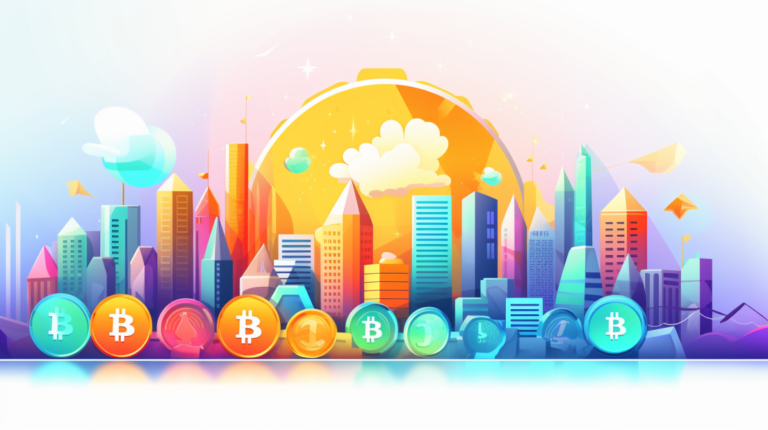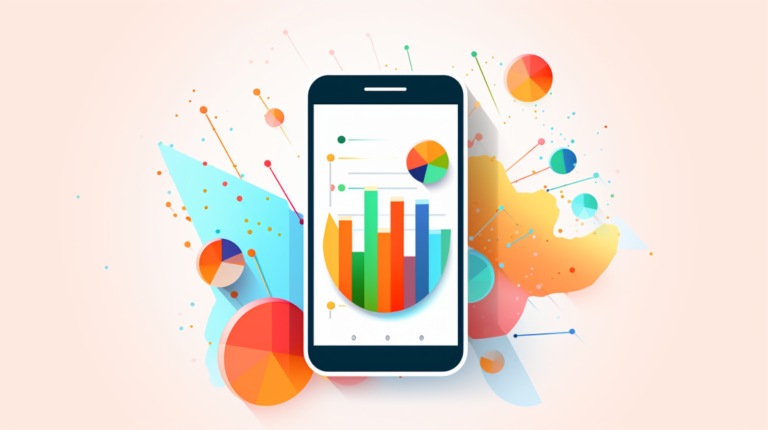Online Banking vs Traditional Banking: Pros and Cons Explained

When it comes to managing your finances, you have two primary options: online banking and traditional banking. Online banking has become increasingly popular in recent years, thanks to its convenience and accessibility, while traditional banking has been around for decades and offers a more personal touch.
Both online banking and traditional banking have their own pros and cons, and it’s important to weigh these factors to determine which option is best for you. In this article, I will provide an overview of online banking and traditional banking, discuss the advantages and drawbacks of each, and compare the two methods to help you make an informed decision.
Key Takeaways:
- Online banking and traditional banking are the two primary methods for managing personal finances.
- Each method has its own advantages and drawbacks, which should be carefully considered when choosing a banking method.
- This article will provide an in-depth analysis of online banking and traditional banking, including their benefits and limitations, to help you make an informed decision about which method to choose.
Advantages of Online Banking
As an avid user of online banking services, I can attest to the numerous benefits that come with this modern method of managing finances. Below are just a few of the advantages of online banking:
| Benefit | Explanation |
|---|---|
| Convenience | With online banking, I can access my account from anywhere with an internet connection. This means I can easily check my balance, transfer funds, and pay bills without having to visit a physical bank branch. |
| Accessibility | Online banking allows me to manage my finances 24/7, without being limited by bank hours or holidays. This means I can take care of my banking needs whenever it’s most convenient for me. |
| Time-saving features | Online banking offers a range of time-saving features, such as the ability to set up automatic bill payments and schedule recurring transfers. This means I can spend less time worrying about managing my finances and more time doing the things I enjoy. |
Overall, online banking is a highly convenient and accessible way to manage your finances, with a range of time-saving features that make it a popular choice for many people.
Drawbacks of Online Banking

While online banking offers many benefits, it also has its drawbacks. One major concern for online banking users is security. With so much personal and financial information stored online, there is always the risk of cyber-attacks or data breaches.
Another potential issue with online banking is the limited access to physical services. While many transactions can be completed online, there may be times when you need to visit a physical bank branch for more complex transactions or services. This can be an inconvenience for some users who prefer the option of face-to-face interactions.
Additionally, technological issues can arise when using online banking. System errors, outages, or website maintenance can temporarily limit or disrupt access to accounts and services. This can be frustrating for users who rely on online banking for their day-to-day financial needs.
It is important to weigh these drawbacks against the benefits of online banking when considering whether or not to switch from traditional banking methods.
Benefits of Traditional Banking
While online banking has gained popularity in recent years, there are still many benefits to traditional banking methods. Here are a few advantages I have personally experienced:
| Benefit | Description |
|---|---|
| In-person Customer Service | Having the ability to talk to a representative in person can be reassuring and helpful when dealing with complex financial issues. I have found that the staff at my local bank is always friendly and willing to answer any questions. |
| Access to Physical Bank Branches | With traditional banking, you have the option to visit a physical bank branch near your home or work. This can be convenient when you need to make large cash deposits or withdrawals, or if you need to speak with a representative in person. |
| Tangible Transactions | Sometimes it can be helpful to physically see and touch your financial transactions. With traditional banking, you receive physical receipts and documents to keep track of your spending and savings. This can provide a sense of security and organization. |
Overall, traditional banking can provide a sense of security and reassurance that online banking may not offer. While it may not be as convenient or accessible as online banking, some individuals may prefer the human touch and physical interactions that come with traditional banking.
Disadvantages of Traditional Banking

Despite traditional banking’s benefits, it’s important to consider its drawbacks. For one, traditional banks tend to have limited operating hours, which can be inconvenient for those with busy schedules. Additionally, transactions at brick-and-mortar banks may take longer to process, especially when compared to online banking’s instant transfers.
Another significant disadvantage of traditional banking is the potential for fees on certain services. For example, banks may charge fees for checking account maintenance, ATM withdrawals, or overdraft protection. These fees can quickly add up and create a financial burden for consumers.
Furthermore, traditional banking can lack the convenience and accessibility of online banking. While physical bank branches offer in-person customer service, this may not be feasible or efficient for those who live in rural areas or have mobility issues. Online banking, on the other hand, offers 24/7 account access from virtually anywhere with an internet connection.
Lastly, while traditional banking may offer tangible transactions such as cash deposits and withdrawals, it can also come with security risks. Physical bank branches and ATMs can be vulnerable to theft or fraud, putting consumers’ financial information at risk.
It’s important to weigh the pros and cons of traditional banking before making a decision. While it may offer certain benefits, its drawbacks should not be overlooked.
Features of Online Banking
One of the key benefits of online banking is the wide range of features available to account holders. From 24/7 account access to mobile banking apps, online banking has revolutionized the way we manage our finances.
One of the most convenient features of online banking is the ability to pay bills directly from your account. With just a few clicks, you can set up automatic bill payments or pay individual bills online. This eliminates the hassle of writing checks and mailing them out.
Online banking also offers a variety of account management tools, including the ability to check your balance, transfer funds between accounts, and view transaction history. This can all be done from the comfort of your own home, without the need to visit a physical branch.
Mobile banking apps have become increasingly popular in recent years, allowing customers to access their accounts on-the-go. These apps often include features such as mobile check deposit and the ability to disable lost or stolen debit cards.
Another feature of online banking is the ability to set up alerts for account activity, such as when a transaction is made or when your account balance falls below a certain amount. This can help you stay on top of your finances and monitor any unauthorized activity on your account.
Overall, the features of online banking provide a convenient and efficient way to manage your finances. Whether you prefer to bank from your desktop computer or mobile device, online banking offers a range of tools to meet your needs.
Digital Banking vs Traditional Banking: A Comparison
When considering banking options, it’s important to weigh the pros and cons of both digital and traditional banking. Digital banking, or online banking, offers convenience and accessibility, while traditional banking provides in-person customer service and tangible transactions. Let’s take a closer look at these two options to see how they compare.
| Features | Digital Banking | Traditional Banking |
|---|---|---|
| Accessibility | 24/7 account access from anywhere with an internet connection | Physical bank branches with limited operating hours |
| Security | Advanced encryption technology and password protection | Security measures in place, but potential for physical theft or fraud |
| Services | Bill payment options, mobile banking apps, and other digital features | In-person customer service, access to physical bank branches |
| Convenience | Time-saving features, no need to physically visit a bank branch | Potentially longer transaction times, need for physical travel |
Both options have their advantages and disadvantages. Digital banking offers easy accessibility and convenience, but security concerns and limited access to physical services may be drawbacks for some. Traditional banking provides in-person customer service and physical bank branches, but limited operating hours and potential fees for certain services could be a disadvantage for others. Ultimately, the choice between digital and traditional banking comes down to personal preference and individual banking needs.
The Role of Brick-and-Mortar Banking in Today’s Digital Age

In the age of digital banking, traditional brick-and-mortar banks may seem like a thing of the past. However, physical branches still play a crucial role in the banking industry, even with the rise of online banking.
For one, brick-and-mortar banks provide a personalized customer experience that online banking simply cannot replicate. In-person customer service allows for face-to-face communication and problem-solving, which can be especially important for complex transactions or issues.
Additionally, physical bank branches offer access to services that cannot be accessed online, such as safety deposit boxes, notary services, and coin counting machines. These services may not be necessary for every individual, but they can be valuable for some and are not available through online banking.
Finally, brick-and-mortar banks provide a sense of security and stability for customers. The physical presence of a bank branch can reassure customers that their money is safe and secure, which is especially important for those who may be hesitant about online banking.
While online banking may offer convenience and accessibility, physical bank branches still play a crucial role in today’s digital age. As banks continue to evolve and adapt to changing technologies and customer needs, it is important to recognize the value of both online and brick-and-mortar banking options.
Exploring the Shift towards Online Banking
Online banking has been growing in popularity in recent years, and for good reason. There are numerous benefits to managing your finances online, from convenient access to your account information at any time of day to the ability to pay bills and transfer funds with just a few clicks. However, as with any new technology, there are also potential drawbacks to consider.
On the other hand, traditional banking still has its place in today’s digital age. Brick-and-mortar banks offer in-person customer service, access to physical locations for ATM withdrawals and deposits, and the ability to carry out transactions through tangible means like checks and cash. But there are also some drawbacks, such as limited operating hours and longer transaction times.
So, why are more people shifting towards online banking? For one, it can save time and provide greater convenience. With online banking, you can manage your finances from anywhere with an internet connection, whether you’re at home, at work, or on the go. In addition, online banking often offers features like mobile banking apps and 24/7 account access, making it easy to keep track of your finances and stay on top of bills and payments.
However, there are also potential drawbacks to online banking that must be considered. Security concerns are often cited as a major issue, as online accounts can be vulnerable to hacking and data breaches. In addition, online banking can limit access to physical services like check cashing and safe deposit boxes. And if you run into technological issues, it can be more difficult to get the help you need without in-person assistance.
Despite these potential drawbacks, the shift towards online banking is likely to continue as more people embrace the convenience and flexibility it provides. Traditional banks will need to adapt to this change and find ways to offer the same level of convenience and accessibility that online banking provides. Ultimately, the choice between online banking and traditional banking comes down to individual preferences and priorities. While online banking offers numerous benefits, it may not be the best fit for everyone.
Conclusion
 After weighing the pros and cons of online banking versus traditional banking, it’s clear that each has its own set of advantages and disadvantages. Online banking offers convenience, accessibility, and time-saving features, while traditional banking provides in-person customer service, access to physical bank branches, and tangible transactions.
After weighing the pros and cons of online banking versus traditional banking, it’s clear that each has its own set of advantages and disadvantages. Online banking offers convenience, accessibility, and time-saving features, while traditional banking provides in-person customer service, access to physical bank branches, and tangible transactions.
While online banking has its drawbacks, such as security concerns and potential technological issues, traditional banking also comes with limitations such as longer transaction times and potential fees for certain services.
When deciding which banking method to use, individuals should consider their personal preferences and needs. Those who value convenience and accessibility may prefer online banking, while those who prioritize in-person customer service may opt for traditional banking.
It’s important to note that brick-and-mortar banks still have a vital role in the digital age, as they provide a physical presence and human interaction that online banking cannot fully replace. However, the ongoing shift towards online banking is undeniable, and it’s up to each individual to determine which method best suits their needs.
In conclusion, there is no one-size-fits-all answer to the online banking vs traditional banking debate. It ultimately comes down to personal preference and individual circumstances. By weighing the pros and cons of each method, individuals can make an informed decision that aligns with their banking needs.
FAQ
Q: What is online banking?
A: Online banking refers to the use of internet banking services to manage and access your bank accounts online. It allows you to perform various banking transactions, such as checking account balances, transferring funds, paying bills, and more, using a computer or mobile device.
Q: How does online banking work?
A: Online banking works by connecting you to your bank’s secure website or mobile app. You can log in using your unique username and password, and then access various banking features and services. Transactions are typically encrypted for security purposes, and you can usually set up additional security measures, such as two-factor authentication, to protect your accounts.
Q: Is online banking secure?
A: Online banking is generally considered secure, as banks implement advanced security measures to protect your information and transactions. However, it’s important to follow good security practices, such as using strong passwords, regularly updating your devices and apps, and being cautious of phishing scams or suspicious links.
Q: What are the advantages of online banking?
A: Online banking offers several advantages, including convenience, accessibility from anywhere, time-saving features like online bill payment, 24/7 access to account information, and the ability to easily track and manage your finances.
Q: What are the drawbacks of online banking?
A: Some drawbacks of online banking include potential security concerns, limited access to physical banking services like cash deposits and withdrawals, and the possibility of technological issues that may temporarily disrupt online banking services.
Q: What are the benefits of traditional banking?
A: Traditional banking provides in-person customer service, access to physical bank branches, the ability to speak with a bank representative face-to-face, and the comfort of tangible transactions like handling physical cash or checks.
Q: What are the disadvantages of traditional banking?
A: Disadvantages of traditional banking include limited operating hours, longer transaction times compared to online banking, and potential fees for certain services like overdrafts or using non-network ATMs.
Q: What features does online banking offer?
A: Online banking features commonly include 24/7 account access, the ability to transfer funds between accounts, online bill payment options, mobile banking apps for on-the-go access, and the ability to set up account alerts and notifications.
Q: How does online banking compare to traditional banking?
A: Online banking offers convenience and accessibility from anywhere, while traditional banking provides in-person customer service and access to physical branches. The choice between the two depends on individual preferences and needs.
Q: What is the role of brick-and-mortar banking in today’s digital age?
A: Brick-and-mortar banks still play a significant role in the digital age, providing physical branches for customers who prefer in-person interactions, access to physical services like cash transactions, and additional security measures.
Q: Why is there a shift towards online banking?
A: The shift towards online banking is driven by the convenience, accessibility, and time-saving features it offers. Additionally, the ongoing advancements in technology have made online banking more secure, further fueling the transition away from traditional banking.






